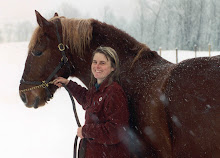Time to Get Ready for Chicks!
March 1st—get set, GO! It’s still 10 degrees Fahrenheit at night here, and I’m still wearing double layers of clothes, but it’s time to plan! This is the year you’re going to do it. You’re ready raise chicks, and you should order them now in time for delivery in the spring (I try to time it so that the chicks can go outside in three weeks, and the pen they are in still has a heat source that keeps the air warm in at least one area to about 80 degrees Fahrenheit- this translates to late April in our Vermont clime). Start out with the egg layers first, if you’re feeling squeamish about raising meatbirds. Believe me, I’ve been there.
When I was younger and braver, I worked at the Vermont Institute of Natural Science. We lived in a common house with a bunch of other 20 year-olds. We were all full of life and energy; so much that we knew we had the power to change the world, if only someone would listen.
I worked in the rehabilitation center for raptors, where we took on injured hawks and owls and occasionally rare songbirds. One of our duties was to feed the captive birds. It didn’t bother me when I had to thaw out the frozen rats- I’ve never really had a huge affinity for them, although I had a great pet rat once. We also fed the birds the chicks from local hatcheries. They were excess hatches, chicks that had not been sold and were killed by gassing them with carbon monoxide. They were an amazing source of food for hawks and owls, but it was hard for me to pick up the black plastic garbage bags full of yellow fuzzy forms and hoist them into the back of the Honda.
On the drive back to the raptor center, I usually had the radio cranked as high as it would go. Never country music, mostly stuff like Journey or REO Speedwagon; sometimes CSNY or Cowboy Junkies. On one trip back to the center, I heard a cheep from the back of the car. I pulled the Honda over, and untied the black bag. There, inside, were three live chicks that had somehow avoided being gassed to death.
I raised those birds at the raptor center until they were so fat that they could hardly follow after me. They were so tame they knew their names. The day came when they started interfering with guests at the center, vying for attention right alongside the Snowy Owl display. I was told that they had to go.
My friend graciously offered to do the slaughtering, and I acquiesced. I remember crying for hours after their demise, wondering how I would ever be able to eat them. They sat in the freezer for about three weeks before I got up the nerve to eat them. When I finally did, I realized that I hadn’t tasted chicken that good and well cared for in a very long time.
But you can start with the egglayers…
Get sexed chicks (the ones that are 98% certain to be hens) from one of the reputable hatcheries mentioned in the Resource section of The Joy of Keeping Chickens, and raise them for egg production. By the time you’ve had the birds for two years, you may be brave enough to tackle the next step… using the chicken meat. Until then, here’s a checklist to get ready for your new chicks:
Housing should be draft-free, corner free (so birds aren’t able to pile up on each other- use cardboard to round out the edges of your pen), and warm (suspending a heat lamp about 17” above the bottom of the pen should create a temperature of about 95 degrees Fahrenheit. The pen can be as fancy as a finished, insulated area in your chicken coop, or as rudimentary as a cardboard appliance container with the sides cut away and lined with newspaper for their first few days and dry wood pine shavings thereafter. Make sure domestic house cats and dogs don’t have access to the chicks. Keep young children supervised around the new chicks, as this stress can also be overwhelming to the babies.
2. Waterers should be sufficient enough so that birds don’t have to crowd around frantically to drink. For very small chicks, place marbles or pebbles in the base of the waterer so that the chicks don’t get in it and drown. A one-gallon plastic waterer per 15 to 25 chicks should be good.
Make sure that you have chick starter on hand. This feed is much higher in protein than the ration used to grow older birds. I scatter it on the ground for the first couple of days before filling feeding trays for the chicks.
Change the chick’s bedding daily if needed. Feces can be ingested by the chicks, and infestations of protozoans called Coccidia can be detrimental.
Listen to the chicks. They should be emitting cooing type sounds that sound like bee bee beep, bee bee beep. Not CHEEP CHEEP CHEEP. Baby chicks are like any other baby. They need food, water and warmth. Adjust your conditions until you hear happy chick sounds!
More later on what to do to transition your chicks to more independence.
Subscribe to:
Post Comments (Atom)


Jenn helped our family get started with chicks about 10 years ago and we are forever thankful!!
ReplyDelete